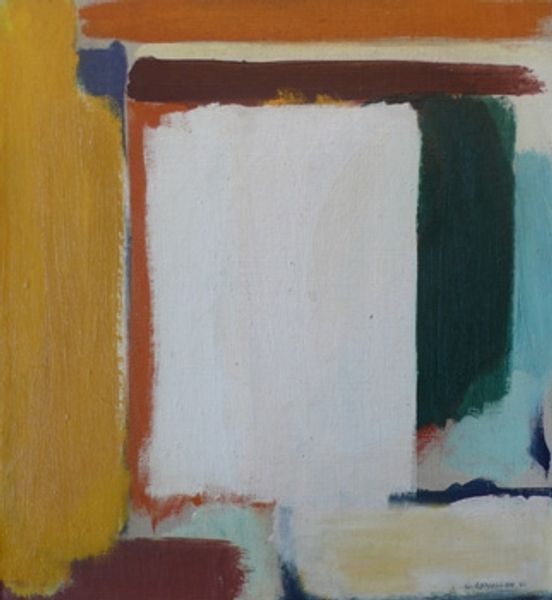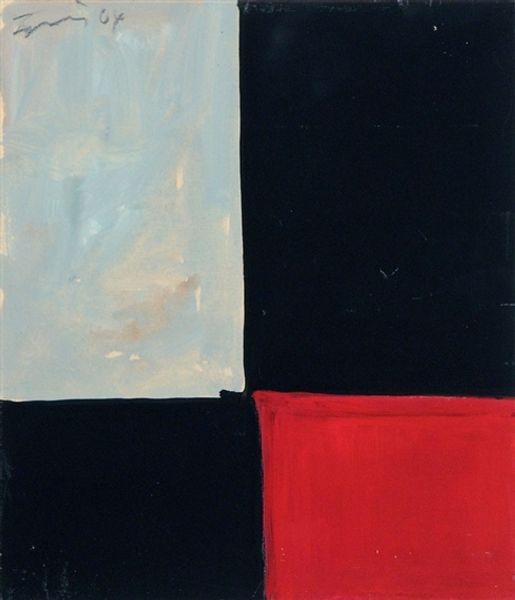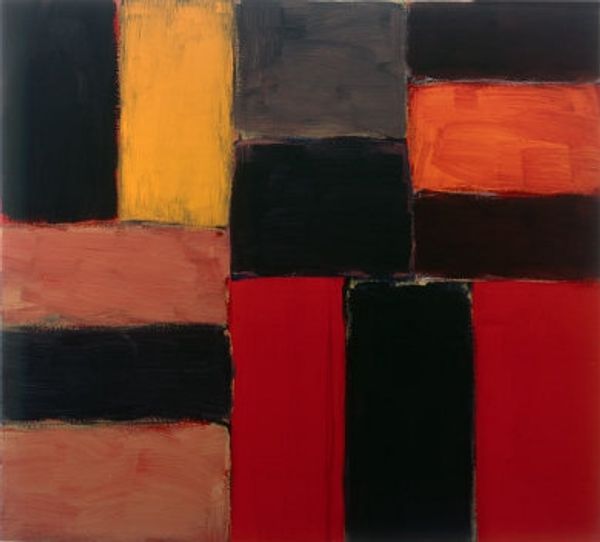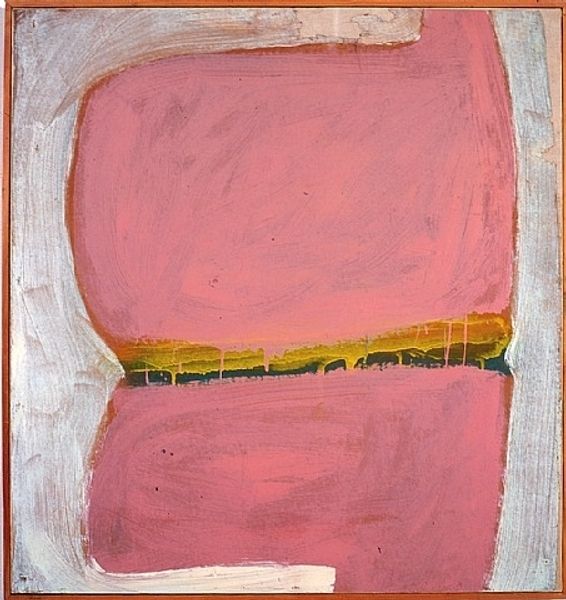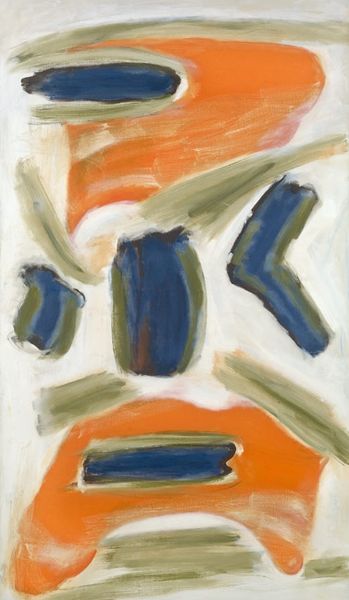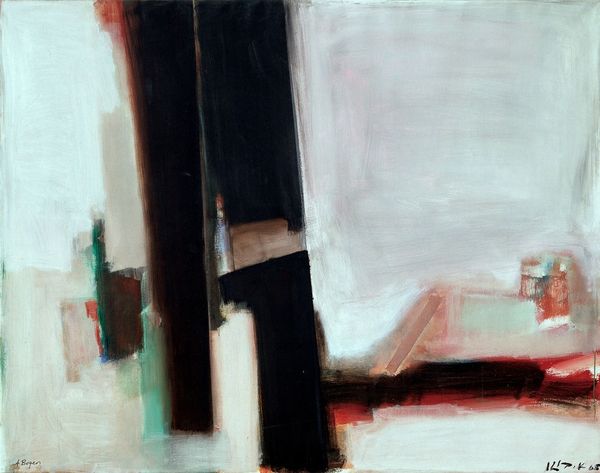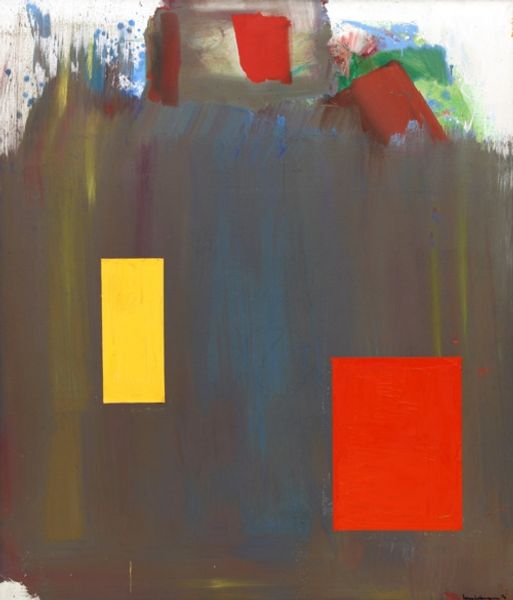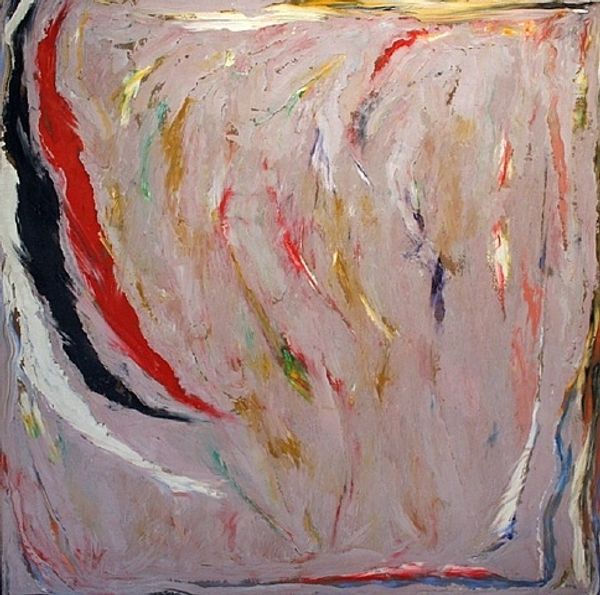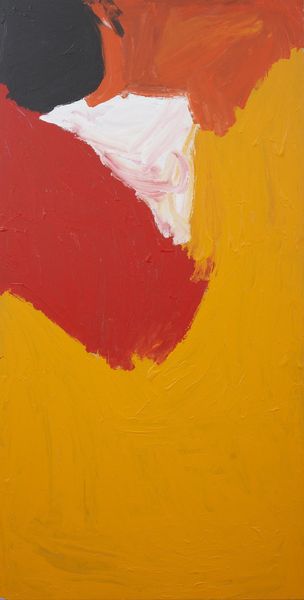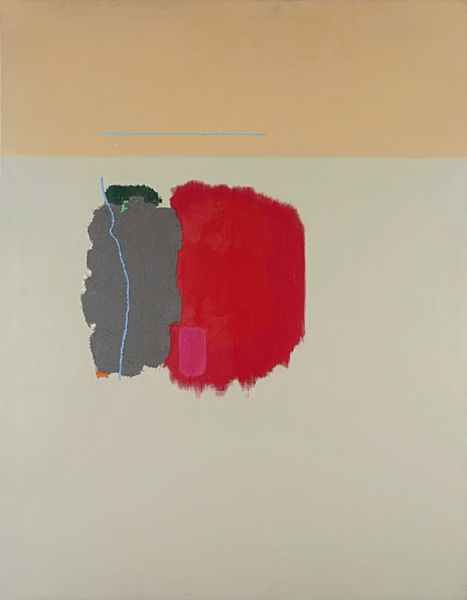
painting, oil-paint
#
abstract painting
#
painting
#
oil-paint
#
colour-field-painting
#
painted
#
oil painting
#
acrylic on canvas
#
abstraction
#
modernism
Copyright: Olga Albizu,Fair Use
Editor: Here we have Olga Albizu’s “Lyrical,” painted in 1957 using oil on canvas. I’m struck by the bold simplicity and how the blocks of colour interact. What do you see in this piece? Curator: Beyond the immediate aesthetic appeal, it's crucial to understand Albizu within the context of post-war American abstract expressionism. As a Puerto Rican woman working in a predominantly white, male field, her contributions and perspectives were often marginalized. Can you imagine the complexities she navigated, the biases she challenged, to even arrive at the canvas? Editor: That's not something I had considered at first glance. So, the "lyrical" aspect… is that possibly related to something beyond pure aesthetics? Curator: Precisely. Consider the cultural context. 1950s America was grappling with civil rights, burgeoning feminist movements. How might Albizu's abstract forms – these planes of color – be interpreted as a subtle visual language commenting on societal structures, expressing a yearning for freedom and equality within those constraints? Is "lyrical" perhaps a descriptor of an unspoken but deeply felt protest? Editor: That's fascinating! The painting feels so calm, almost understated. I wouldn’t have initially connected it with activism. Curator: And that's the power of art, isn't it? To hold multiple truths, to whisper where others shout. By recognizing Albizu's positionality, we unlock a richer understanding of her work, one that resonates far beyond the surface of color and form. Editor: I’ll definitely look at abstract art differently now. Considering the artist's background brings so much more meaning. Curator: Indeed. And it encourages us to question whose stories are told, and how. Always remember to view artworks as not just aesthetic objects, but as complex cultural artifacts that reflect the socio-political realities of their time.
Comments
No comments
Be the first to comment and join the conversation on the ultimate creative platform.

